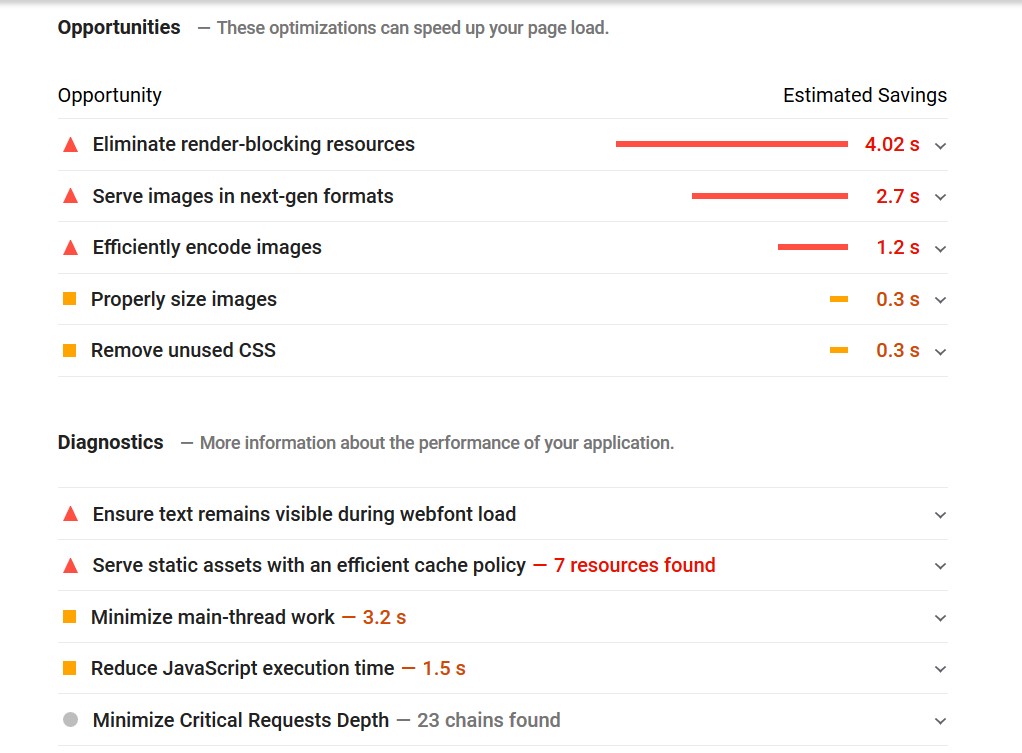
How to Make Your Website Stand Out – Part 1: Website Hosting Tips and More
There’s always that one unique house in every neighborhood. You know the one… It doesn’t look like the others. It’s shunned and talked about at every community meeting.
Being shunned by your peers may seem like a problem, but in marketing, it can actually be a good thing. Though “fitting in” may get you more street cred in your community, it’s a death trap for your website. Here’s why…
You really don’t want your website to be just like your competitors’ sites. Your audience is unique, and your value proposition should be different. In fact, we can almost guarantee that a lot of the websites you are competing against aren’t doing such a great job standing out either (trust us, we’ve reviewed thousands of websites).
Here’s the thing: Being different will help you stand out and compete (and compete well). If your website is good enough to stand out, your visitors will want to stick around and they’ll convert, which is the ultimate goal.
Now, this topic is quite extensive, and we could write volumes on it. But, to simplify, we are breaking it up into a 2-part article series.
In Part 1 below, we will walk you through the more technical aspects of high-performing standout websites such as user experience (UX) and website hosting tips.
Website Hosting Tips – Start Here When Optimizing Your Website to Stand Out
One of the most important website hosting tips to take away? If the backbone of your website is poor hosting, it doesn’t matter what you add to the face of the website. It won’t stand out because it will suffer from speed, security, and downtime issues.
Here’s the hard truth (and one of the most important website hosting tips you’ll receive): When it comes to hosting, you get what you pay for. Would you trust your surgery to a doctor who charges $15/hr? Seems absurd—that’s because it is. And so is cheap hosting when you’re trying to grow your brand with a high-performing website.
For example, some “cheap” hosting companies offer unlimited storage and bandwidth, but that doesn’t mean that’s what you will get when you sign on. You may find that once you hit your limit (that you didn’t realize you had), your website performance deteriorates or the hosting company shuts you down.
Here’s the bottom line…
Hosting businesses have their own costs, so if they aren’t charging you a lot, they aren't running the best business from their end because that costs them money as well.
Website hosting doesn’t have to be that expensive, but don’t fall for rock-bottom prices. Look for features that will keep your website running smoothly and give you the support you need when you need it.
Here are some website hosting tips about what features to aim for when it comes to selecting a provider.
Fast and Reliable
Your hosting company should be able to handle large surges in traffic and scale with you as you grow.
According to Simon Ball, head of digital media services at Nasdaq Corporate Solutions, as reported by cnet, scalability is critical. “You need the ability to rapidly scale your website as your target audience grows and the resiliency to handle sudden bursts of high traffic,” he said.
Highly Rated
Don’t be swayed by flashy marketing. Look for a high number of positive reviews when selecting a hosting company.
24/7 Support
How much support will you need? If you want to contact your hosting company at midnight about your “down” website, that typically won’t come with a $3/month hosting package. Look for email, phone, and ticket support with priority turnaround times for emergencies, and 24-hour phone support if you need it.
If you want to stay on top of your website uptime, backups, security threats, and more potential issues, work with a managed hosting provider. This service typically includes monitoring your website for any anomalies so you can be proactive and stay on top of any threats before they happen.
99%+ Uptime
Consider this scenario: You schedule a massive 24-hr promotion and you emailed your list for the last 2 weeks, preparing them for the sale. The day of the sale, your website goes down. You contact your hosting company, and they don’t get back to you until 12 hours later. Kiss your money goodbye.
Reliable hosting companies offer high uptime guarantees. Look for 99.95%+ uptime guarantee, which is pretty standard.
If you’re working with a web host right now and you’re unsure of your uptime percentage, use these tools to find out.
Hosting is the first step to keeping your website well optimized for growth. Once you implement these website hosting tips and secure the website back end, it’s time to turn to user experience to really make your website stand out.
How to Make Your Website Stand Out: UX and Low Bounce Rates
A great user experience is usually synonymous with low bounce rates, meaning that most users don’t “bounce” off your website to visit another because they found what they were looking for.
According to Google, “A bounce is a single-page session on your site. In Analytics, a bounce is calculated specifically as a session that triggers only a single request to the Analytics server, such as when a user opens a single page on your site and then exits without triggering any other requests to the Analytics server during that session.”
In layman’s terms, bounce rate is the percentage of people who land on one page of your website and don’t visit another.
Keep this in mind:
Improved UX = Happier visitors = Lower bounce rates = Increased sales and conversions
Here’s what this looks like…
As you improve your user experience (UX), your visitors get happier, which keeps them on your site longer, reducing bounce rates. If they stay on your site longer, there is a greater chance of conversion.
Providing your visitors with an improved experience is not only beneficial for your users. Google incorporates bounce rate and your users’ duration on your site when ranking your website in its search engine. If your visitors aren’t happy, Google isn’t happy.

Here are some ways to improve UX to reduce your website’s bounce rate:
Improve Your Website Speed
It has been said that the internet user’s attention span is around 8 seconds, similar to a goldfish. While we have no idea how you can measure the attention span of a goldfish accurately, simply looking at your own web browsing behaviors is all the proof you need.
Do you stay on a website if it doesn’t load in the time you expect? If you are comparing 3 brands and one website doesn’t load fast enough, you know you won’t waste your time waiting for it to load. Who’s got time for that?
Add to that, 47% of consumers expect a web page to load in 2 seconds or less, and 40% of people leave a website if it takes more than 3 seconds to load.
Google also loves speed.
Google is focused on providing its users with the best UX, which is why the search engine incorporates “speed” into its algorithm when ranking websites. In a nutshell, the faster your website loading time, the greater chance Google will show your website some love.
Note that speed is only one of many factors Google uses to rank websites, but improving your speed will definitely help if you are trying to get more traffic via Google.
How do you improve your website speed?
Before you start tweaking and tinkering, figure out what is slowing down your website. To do this, use a tool called Google Page Speed Insights.
Here’s what it may look like when you add your website to this tool. Google will give your page a speed score and show you what is slowing down your website along with opportunities for improvement:

Here are a few ways to speed up your website:
- Cache your website. Your developer can help you with this. Or, if you use WordPress, use this plugin.
- Consider using a content delivery network (CDN) if you have international website visitors. A CDN will load your website on servers located in the countries your visitors are searching from to speed up loading times.
- Optimize images. Compress your images for the web by using pngs instead of jpgs.
Here’s a list of more ways to reduce your website load time. If you need help understanding or implementing any of these, we’d be happy to assist.
Make Sure Your Website Is Clear and Uncluttered
What is the first impression visitors get when they arrive on your home page? Will you be able to solve their problems? If they can’t find anything that suggests your company is the answer to their problems in the first 5 seconds, you will lose them.
More is not better when it comes to your website layout and design. Keep it simple and include enough white space so your most important content stands out from the rest. White space around titles and text increases user attention significantly.
Your home page needs to compel visitors to visit more pages until they perform the action you desire (lead, sale, contact you, etc.). We will talk more about content, design, and decluttering in Part 2 of this article series and break down how to capture attention with your website content to increase users’ time on site.
Make It Mobile Friendly
A website that stands out is a website that’s optimized for mobile.
Mobile accounts for nearly 50% of website traffic. If your website isn’t optimized for mobile, half of your visitors may have a poor experience.
At a minimum, your website should be responsive, or at the least mobile friendly, which means it will be optimized for mobile viewers. Fewer images, less content, and easy navigation are just some of the features of mobile-optimized websites. For more information on how to optimize your website for mobile, review these additional resources:
Why You Should Be Optimizing for Accelerated Mobile Pages (AMP)
Better Optimizing Your Mobile Web Presence
How Do You Make Your Website Stand Out? What You Need to Know
In this article, we talked about the technical aspects of making a website that stands out. We first offered website hosting tips for how to find a reliable hosting company that has the support, technology, and guarantees to keep your website running optimally.
Next, we discussed how to improve user experience and reduce bounce rates by increasing website speeds, making your website mobile friendly and decluttering your pages.
What’s next? In Part 2, we will dive into the look and feel of your website and how to create winning design and copy to increase conversions and make your website stand out in your industry.
NOTE: We realize this piece was a bit technical, so if you need any assistance with implementing these website hosting tips and other key bits of information, you know where to find us. Contact us here for a free consultation.

